The Kakatiya dynasty reached its dramatic climax under Prataparudra. The grandson of Rani Rudrama Devi, Pratapa Rudra Deva II (1289-1323 CE) is best known for bringing to justice the rebellious Nayaks who killed her and for his stubborn resistance to the Turkish sultans of Delhi, whom he twice defeated in five wars.
Though the Kakatiyas trace their origin and rise to the modern Telangana region, Prataparudra called himself Andhradesadeeswara, as he viewed himself as the protector of India’s historic Andhra region (which included modern TS state).
In fact, historically, the word Andhra traditionally meant Telugu, and the lord of the Telugu land put up a spirited defense against the alien Turks. This post will examine the legacy of this great Andhra personality with information beyond our Kakatiya dynasty tweets (storified here).
Background
The son of Queen Rudramba’s daughter, Mummadi devi & the Kakatiya nobleman Mahadeva, Pratapa Rudra Deva II ascended the throne in 1289 following Rudrama Devi’s glorious battlefield death against the rebel Ambadeva.
Aided by the neighboring Seuna and Pandya kingdoms, Amba Deva continued to defy Kakatiya power in southwestern Andhra. With a three pronged attack, Prataparudra surrounded the rebel and brought him to justice. His lieutenant Gona Gannayya (son of Gona Buddha Reddy of Ranganatha Ramayana fame) took the forts at Adoni, Tumbalam, Raichur, Mamuva, and Haluva. Indeed, the entire Raichur-doab, which would later feature centrally in the Vijayanagara-Bahmani Wars, came under the Kakatiyas.
Following this, King Prataparudra engaged in a series of administrative reforms. He promoted a number of Padmanayakas to Nayak status, and they would play a role in the fates of the Telugus in the centuries to come.
First Delhi-Kakatiya War
Alauddin Khilji’s unauthorized humbling of the Seunas of Devagiri in 1296 had been done half through stealth and half through trickery (he passed himself off as a horse trader, and his 12,000 cavalry army as ‘product for sale’, which laid siege to the unprepared capital-fort by surprise). However, Khilji sent an army in full force against the Kakatiyas, and it tasted Telugu steel first hand, being worsted in 1303.
Under the command of Jauna Khan (the future Sultan Mohd. bin Tughluq), Khilji’s soldiers advanced into the Kakatiya kingdom via backroad routes in Odisha. The Turk army of Delhi was so completely defeated by Prataparudra’s forces (led by his generals Venna and Maili) at the Battle of Upparapalli (Karimnagar district, Telangana State), that it was many years before another expedition was even sent. It is said that Prataparudra had been giving refuge to the dethroned, and tragically ill-lucked Chaulukya King of Gujarat–demonstrating the solidarity of India’s Dharmic Kings.
Second Delhi-Kakatiya War
The stupidity of the Seuna ironically named Ramachandra led to Devagiri’s co-option by Delhi. This Yadava king of Maharashtra generously aided Khilji, who was eager to remove the ignominious blot of his prior defeat to Prataparudra, in his second war against the Kings of Andhra.
Due to the infamous Turk advantage in cavalry, reputed to be 100,000 horse against the Telugu 20,000, the Kakatiya king fought a defensive war. The outer wall of Warangal was so strong that balls from catapults would bounce off of it. The defenders of Andhranagari pummeled the Delhi invaders with stones, arrows, daggers, and naptha. This relentless assault from the front was compounded by cavalry attacks from the side and rear, led by the valiant Vinayaka deva and assisted by the loyal Telugu nayaks.
While, an advanced siege engine was eventually able to overcome the outer wall, the Turks were unable to assault the main fort. Kafur’s situation was not only frustrating but grew desperate as his postal service to Khilji had been destroyed by Telugu guerrilla attacks. Alauddin grew fearful as he had no reports for 6 weeks. The siege went on for two months, when the frustrated Kafur barbarically began committing atrocities against the civilian population, especially the women.
Appalled and distraught at such wanton cruelty contravening the laws of civilized warfare (and faced with a difficult, increasingly crowded situation in the keep), Prataparudra requested peace terms, and was compelled to part with the bulk of his treasure, including the legendary Kohinoor diamond (mined in Golconda). Perhaps he deemed being a nominal tributary a necessary evil to prevent further misery from being inflicted on his subjects.
Third Delhi-Kakatiya War
At the first opportunity , the Kakatiya King ceased payments and rebelled against Delhi in 1316. The 3rd expedition to Warangal was led by Khusrau Khan (a Hindu convert-slave general—like Kafur—who would himself later lead a short-lived coup against the Turks) in 1318. Lesser known and difficult routes were used to catch Prataparudra unprepared, as he was campaigning to restore his authority in southern Andhra. Not much is known beyond the unreliable accounts of central asian Chroniclers, but he apparently deemed it prudent to accept terms and resume making payments.
Fourth Delhi-Kakatiya War
The Fourth War was a testament to the valor of Prataparudra and the furious resistance against a foe that outmatched him in size. He again ceased payments and asserted his independence in 1320, leading to invasion in 1321-22.
The Telugus led repeated cavalry raids against the circumvallating Turk forces. This battle of attrition continued for 6-8 months, with the redoubtable defenders resisting with all their might. The 77 bastions of Warangal were redoubtably manned by 77 commanding Nayaks. When rumors spread in Ulugh Khan’s camp of a change in Delhi, dissension in the ranks provided the Kakatiya King with precisely the opportunity for which he was looking.
Veera Rudra sallied out heroically and personally routed Khan’s forces with his cavalry charge. The retreating enemy would scarcely make it back with 10 men after the terrible defeat inflicted on him by the Telugus. To the credit of the Odias, the Dharmic King Bhanudeva II of Odisha sent a contingent to help defend Warangal.
Fifth Delhi-Kakatiya War & Sack of Warangal
Alas, the fates conspired against the united Kingdom of the Andhras. Due to Turkic control of the kingdom of Devagiri (renamed Daulatabad), Ulugh Khan was able to raise a new army with alarming speed (4 months). He surprised Prataparudra in 1323 and laid siege again to Ekashila nagari. The exhausted and under-supplied Kakatiya forces had not been expecting renewed invasion so soon (they should have had a better intelligence network…) and had distributed much of their provisions to the civilians, who had suffered great deprivation in the previous siege. The investment continued for 5 months. Despite the valiance of Prataparudra, his nayaks, and the Telugu soldiers, their exhausted defense was eventually overcome by the large and better supplied force of the Tughluq Turks.
Warangal, the great Capital of the Telugus (literally referred to then as “Andhra Maha Nagari”) was mercilessly sacked and devastated for its resistance, and reputation as a thorn in the side of the Turks. Evidence of the vandalism and pillage is evident today in the broken ramparts and destroyed Svayambhunatha Temple, among many other structures. The great cruelty of the Turks (who like Razakars were not known for their magnanimity) shown towards the city of the Andhras should not be forgotten, nor should the heroism of the city’s defenders.
The Kakatiya King himself was taken captive to be humiliated at Delhi. According to the copper plate inscription of Prolaya (of Musunuri Nayaks fame), Prataparudra Deva II committed suicide on the banks of the Narmada river rather than face dishonor. His descendants are said to have relocated to Chattisgarh, where the ruled a small principality.
Achievements
Prataparudra receiving sanskrit scholar-poet VidyanathaPrataprudra would expand his kingdom from Telangana to Seemandhra, Kanchi in Tamil Nadu, districts in Maharashtra and Karnataka, and Bastar in Chattisgarh (where his descendants were reputed to live afterwards).
He was a skilled general, clever politician, and valiant King who fought for Dharma, and did what he thought best to protect his subjects, for as long as he could. He is said to have given refuge to the dethroned Chaulukya of Gujarat and aid to the Pandyas while they were fighting Kafur, showing his patriotism for Indic Civilization.
While the Kakatiya empire reached its greatest extent under Prataparudra, his main achievement was his stubborn opposition to the Turkic rulers of Delhi. The 1303 Telugu victory at the Battle of Upparapalli stands out in particular, as it was open battle unlike the later sieges of Warangal. Even at the main fortress-city of “Andhra nagari” too, he oversaw not 1 or 2, but 3 courageous and protracted sieges (between 2 & 8 months each), utterly routing the enemy once and heroically resisting twice.
The Adoni fort (of Vijayanagara fame) was constructed by him as was the fortress of Golkonda (either by him or a predecessor).
Culture flourished under the Kakatiyas, and despite the terrifying and devastating wars he faced, this continued under its final king. Prataparudra himself composed a drama (Yayati Charitramu) and scholar Vidyanatha’s treatise on rhetoric was called Pratapa Rudra Yaso Bhushana in his honor. He was also a patron of poets such as the grammarian Agasthya and the dramatists such as Viswanatha. Thus, Prataprudra was not only a benevolent ruler, and courageous warrior, but a man of art and literature as well.
Legacy
Through alternatively known as Kumara Rudra and Andhradesadeeswara, it is perhaps his moniker Veera Rudra, that best defines him and his legacy. Truly, Prataparudra fought courageously throughout his life, first to avenge his grandmother and restore order in his kingdom, then to chastise his politicking neighbors and re-assert Kakatiya prestige, and finally in the third phase, to doughtily fight and face the full power of Northern India under Turkic invaders.
This honorable king was not only a valorous warrior-General, but a wise and prosperous ruler with cultural sensibility. Marco Polo is recorded to have visited the Kakatiya port city of Motupalli in A.D. 1293, and had a high impression of the kingdom’s wealth and the efficiency of its administration. He even mentions the fort of Golkonda constructed by the Kakatiyas, and spoke highly of it as well as the diamonds for which the region was famous.
Great irrigation works were also produced via numerous viaducts, tanks, and lakes (most famously Ramappa and Parkhal). Prataparudra in particularly reclaimed jungle tracts in Rayalaseema. While the founder of his dynasty was a Jaina, the last Kakatiya king (like the majority of the dynasty) was a devoted Saiva. Both he and his predecessors were known for their policy of religious tolerance. The popularity of Saivism in this period is credited to Sripati, Manchana, and Mallikarjuna Panditaradhya. The literary patronage and artistic achievement of this last of the Imperial Kakatias would help set the stage for the Andhra cultural renaissance in the centuries to come.
Proudly taking the title “Andhradesadeeswara”, protector of the Andhra desa (i.e. land of all Telugus), Prataparudra long stymied the Turk advanced into the South. He valiantly fought the invaders, utterly routing them almost to the last man, twice. Were it not for his love for his people, even the second war may likely have been won by him.
In the end, Prataparudra was undone by a lack of depth( he should have done what Maharana Pratap of Mewar later did and had other forts and refuges to retreat to), a robust alliance network from other Dharmic states (while Odisha helped, his campaigns against Hoysalas & Pandyas prevented well-coordinated confederacy with them) and new technology (the massive catapult/trebuchet). Above all, when facing a determined and single-minded foe ignoring all the laws of war, one must be steadfast, and be proactive, rather than traditional, and adapt to the situation.
The Pandyas were initially successful against Kafur by running a guerrilla campaign that almost wiped him out–Prataparudra should have taken note. He should also have had a more efficient intelligence system to increase preparation time before invasions. Most importantly, had he had the foresight to give assistance to the Yadavas back in 1296, perhaps the kingdoms of the Dakshinapatha would have hung together, rather than hung separately.
Nevertheless, while remaining a cautionary tale about the importance of thinking strategically & politically rather than tactically and soft-heartedly, he should be honored for his sacrifice. Truly, he went down fighting, and gave up his life honorably on the banks of the Narmada. Thus if the stones of Orugallu (Warangal) could tell his tale, it would be “Death before Dishonor”.
http://youtu.be/JT9huTBuAfg
References:
- http://www.aponline.gov.in/quick%20links/hist-cult/history_medieval.html
- http://www.thehindu.com/todays-paper/tp-features/tp-youngworld/travels-of-marco-polo/article2269508.ece
- Rao, P.R. History and Culture of Andhra Pradesh: From the earliest times to 1991. Delhi: Sterling. 1994
- Sandhu, Gurcharan Singh. Vision Books: Delhi. 2003
- Jalal, S. Faisal . The Darya-E-Noor Is in the Sonali Bank Vault
- Prasad, Durga. History of the Andhras. P.G. Publishers. 1988
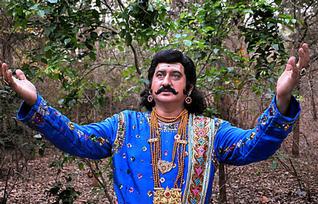
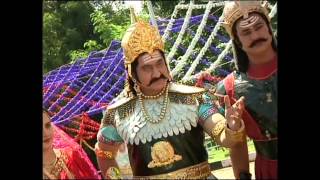
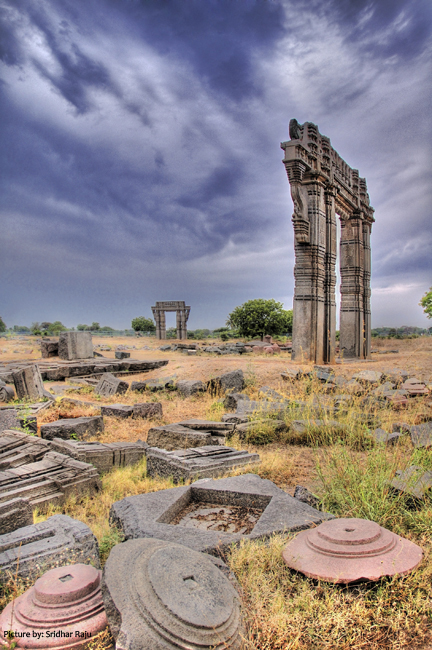

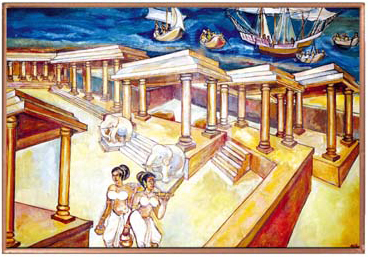


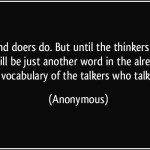



Brilliant passionate write up – came to know several facts about Prataparudra I didnt know earlier. Feel your pathos at the demise of Kakatiya empire and the brazen stupidity of the Marathi Yadavas for aiding Turks out of sheer animosity w/ Andhras forsaking any sense of Dharmic unity.
Also, please do a piece on Sri Krishnadevaraya, know he is a Tulu, but we Telugus regard him as our own and his contribution to Telugu culture in medieval era was unparallelled.